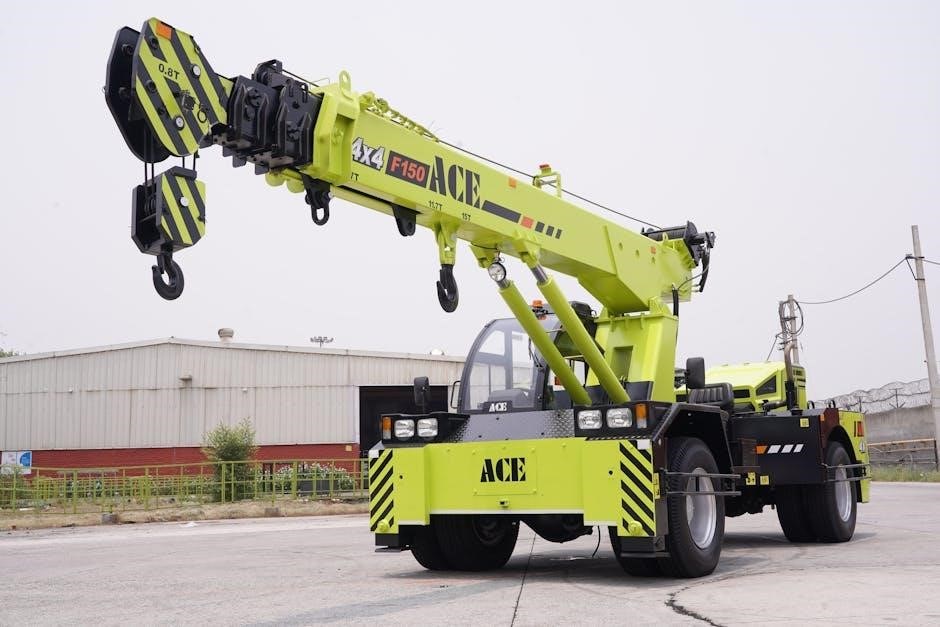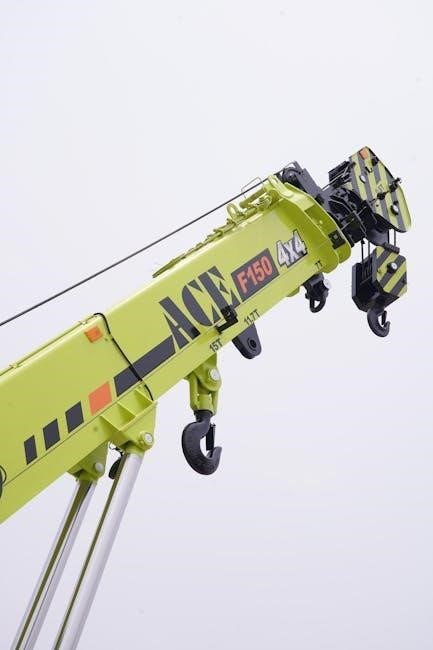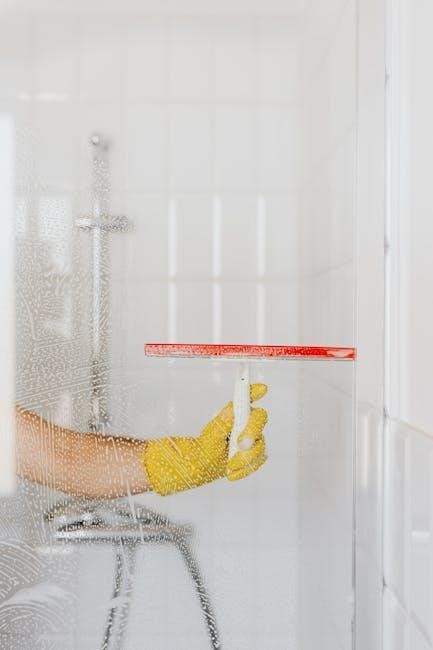Hatcher’s Algebraic Topology PDF: A Comprehensive Guide
Allen Hatcher’s seminal work‚ available as a 3․5MB PDF‚ is a cornerstone of modern algebraic topology‚ offering a rigorous yet accessible exploration of the field․
Allen Hatcher is a highly respected mathematician renowned for his contributions to algebraic topology․ His book‚ “Algebraic Topology‚” has become a standard text for graduate students and researchers alike․ The readily available PDF version facilitates widespread access to his comprehensive treatment of the subject․
Hatcher’s approach emphasizes geometric intuition alongside rigorous mathematical proofs․ He masterfully covers fundamental concepts‚ including homotopy theory‚ homology‚ and cell complexes․ The book’s clarity and detailed exercises make it an ideal self-study resource․ Online resources‚ like solutions manuals and study guides‚ further enhance the learning experience․ His work also delves into advanced topics like toric topology and braid groups‚ solidifying its place as a pivotal text in the field․
What is Algebraic Topology?
Algebraic Topology is a branch of mathematics that uses algebraic tools to study topological spaces․ It aims to classify spaces based on properties that are invariant under continuous deformations – stretching‚ bending‚ but not tearing or gluing․ The PDF of Hatcher’s book provides a deep dive into this fascinating field․
Key concepts include homotopy‚ homology‚ and fundamental groups‚ which translate geometric problems into algebraic ones․ This allows mathematicians to leverage the power of algebra to understand the structure of complex spaces․ Hatcher’s text expertly explains these concepts‚ bridging the gap between geometry and algebra․ It’s a powerful tool for analyzing shapes and their properties‚ finding applications in diverse areas like physics and computer science․
The Significance of Hatcher’s “Algebraic Topology”
Allen Hatcher’s “Algebraic Topology” stands as a remarkably accessible and comprehensive text‚ widely adopted by graduate students and researchers․ The freely available PDF format has significantly broadened its reach‚ democratizing access to advanced topological concepts․ Unlike many texts‚ Hatcher prioritizes conceptual understanding alongside rigorous proofs․
Its strength lies in its clear exposition of core ideas‚ coupled with a wealth of examples and exercises․ The book covers a broad spectrum of topics‚ from fundamental groups and covering spaces to homology and cohomology․ It’s a valuable resource for self-study and a cornerstone of modern algebraic topology education‚ making complex ideas approachable․

Accessing the Hatcher PDF
Hatcher’s “Algebraic Topology” PDF is readily available through the author’s website‚ e-books directories‚ and various online platforms for free download․
Free Download Options
Allen Hatcher’s “Algebraic Topology” is generously offered as a free PDF download‚ making this invaluable resource accessible to students and researchers worldwide․ Several online repositories host the document‚ including E-Books Directory‚ where it’s listed as a 3․5MB file․
Furthermore‚ the book’s download page‚ maintained by the author‚ provides direct access and often includes supplementary information․ Websites dedicated to documenting solutions to the book’s exercises also frequently link to the PDF․
These readily available options eliminate financial barriers‚ fostering broader engagement with advanced topological concepts․ Users should verify the source to ensure they are obtaining a legitimate copy of the 2022 American Mathematical Society publication․
Official Website and Resources
Allen Hatcher maintains a dedicated webpage offering the “Algebraic Topology” PDF for free download‚ serving as the primary official source․ This site often includes valuable updates‚ errata‚ and supplementary materials related to the text․
Beyond the PDF itself‚ the author provides links to related resources and encourages community engagement․ Several websites document solutions to exercises within the book‚ often referencing Hatcher’s official page for additional context․
The American Mathematical Society‚ the publisher (2022 edition)‚ may also offer related materials or information about the book on their website․ Exploring these official channels ensures access to the most accurate and up-to-date information regarding this foundational text․

E-Books Directory and Similar Platforms
Several online platforms host the “Algebraic Topology” PDF by Allen Hatcher‚ including E-Books Directory‚ providing convenient access to this essential resource․ These platforms often catalog a wide range of academic texts‚ making discovery easier for students and researchers․
However‚ users should exercise caution when downloading from third-party sites‚ verifying the file’s integrity and source to avoid potentially corrupted or unauthorized copies․ While readily available‚ prioritizing the official website ensures access to the most accurate version․
Platforms like these also list “Prerequisites in Algebraic Topology” as related reading‚ aiding in a comprehensive understanding of the subject matter․ Always confirm the file size (approximately 3․5MB) to ensure a complete download․

Key Concepts Covered in the Book
Hatcher’s “Algebraic Topology” delves into homotopy theory‚ braid groups‚ configuration spaces‚ and toric topology‚ utilizing cell complexes for a robust understanding․
Homotopy Theory Fundamentals
Hatcher’s treatment of homotopy theory forms a central pillar of the book‚ meticulously building from foundational concepts․ It begins with a detailed exploration of homotopy equivalence‚ crucial for classifying topological spaces․ The text then progresses to cover fundamental groups and covering spaces‚ providing tools for analyzing the connectivity of spaces․
A significant portion is dedicated to simplicial homotopy‚ offering a concrete approach to understanding abstract homotopy concepts․ The author skillfully introduces techniques like the Seifert-van Kampen theorem‚ essential for computing fundamental groups of complex spaces․ Furthermore‚ the book emphasizes the importance of understanding higher homotopy groups‚ laying the groundwork for advanced topics in algebraic topology․ This section provides a solid base for tackling more complex problems and applications․
Braid Groups and Configuration Spaces
Hatcher’s exploration of braid groups and configuration spaces represents a sophisticated application of algebraic topology․ He demonstrates how braid groups arise naturally from the study of configuration spaces – the spaces of distinct points in a given space․ This connection provides powerful tools for understanding the topology of these spaces․
The book delves into the algebraic structure of braid groups‚ detailing their generators and relations․ Crucially‚ Hatcher links these groups to the fundamental groups of punctured disks‚ offering a geometric interpretation․ This approach is particularly relevant to understanding the fractional quantum Hall effect‚ as highlighted in recent research․ The text provides a rigorous framework for analyzing these complex structures and their topological properties․
Toric Topology Explained
Hatcher’s “Algebraic Topology” dedicates significant attention to toric topology‚ a field concerned with spaces built from cells resembling the faces of a convex polytope․ The PDF version facilitates detailed study of these structures․ He meticulously explains how to compute the homology and homotopy groups of toric spaces using combinatorial methods․
This section of the book highlights the interplay between algebraic invariants and geometric properties․ Hatcher demonstrates how the topology of a toric space is directly encoded in the combinatorics of its associated polytope․ This approach provides a powerful toolkit for classifying and understanding these spaces‚ offering insights into their fundamental properties and connections to other areas of mathematics․
Cell Complexes and Homotopy
Hatcher’s “Algebraic Topology” PDF extensively utilizes cell complexes as a foundational tool for studying homotopy․ These complexes‚ built from cells of increasing dimension‚ provide a flexible framework for representing topological spaces․ The book meticulously details how to construct and analyze cell decompositions‚ crucial for computing homotopy groups․
Hatcher expertly explains how homotopy equivalence can be understood through cell complexes‚ allowing for simplification and classification of spaces․ He demonstrates techniques for attaching cells and tracking their impact on the homotopy type․ This section is vital for grasping the core concepts of homotopy theory‚ offering a clear path through complex ideas‚ readily accessible within the downloadable PDF․

Core Topics and Chapters
Hatcher’s PDF systematically covers essential topics‚ starting with general topology review‚ progressing through simplicial and homology theory‚ and culminating in advanced calculations․
Chapter 0: Review of General Topology
Chapter 0 of Hatcher’s Algebraic Topology PDF serves as a crucial foundation‚ meticulously reviewing essential concepts from general topology․ This initial chapter doesn’t assume prior deep knowledge‚ making it accessible to a broad audience․ It covers fundamental definitions and theorems regarding topological spaces‚ continuity‚ connectedness‚ and compactness․
Specifically‚ it revisits concepts like open and closed sets‚ homeomorphisms‚ and the construction of quotient spaces․ The chapter also introduces the basics of metric spaces and their relationship to topological spaces․ Exercises within this chapter‚ like Ex․ 0․2‚ provide immediate practice and solidify understanding․ This thorough review prepares readers for the more abstract and advanced topics explored in subsequent chapters‚ ensuring a solid base for grasping the core ideas of algebraic topology․
Chapter 1: Simplicial Homotopy
Chapter 1 of Hatcher’s Algebraic Topology PDF dives into simplicial homotopy‚ a powerful technique for studying topological spaces through discrete structures․ This chapter introduces simplicial complexes – built from vertices‚ edges‚ and higher-dimensional simplices – as a means to approximate and analyze more complex spaces․
It meticulously develops the concept of simplicial maps and homotopies between them‚ laying the groundwork for understanding homotopy equivalence․ The chapter explores the fundamental group and its relation to simplicial complexes․ Readers learn how to compute fundamental groups of specific simplicial complexes‚ gaining practical experience with the tools of simplicial homotopy․ This approach provides a concrete and computational pathway into the abstract world of homotopy theory․
Chapter 2: Homology
Chapter 2 in Hatcher’s Algebraic Topology PDF formally introduces homology‚ a fundamental algebraic invariant used to classify topological spaces․ This section builds upon the foundations laid in previous chapters‚ transitioning from homotopy to a more algebraic perspective․ The chapter meticulously defines chain complexes‚ cycles‚ boundaries‚ and homology groups‚ providing a rigorous framework for computation․
It details the construction of singular homology‚ a powerful tool for extracting information about the “holes” in a space․ Readers learn how to compute homology groups for various spaces‚ including spheres and disks․ The chapter emphasizes the importance of homology in distinguishing between non-homeomorphic spaces‚ solidifying its role as a central concept in algebraic topology․

Chapter 3: Homology Calculations
Chapter 3 of Hatcher’s Algebraic Topology PDF focuses on applying the homology theory developed in prior chapters to concrete examples․ It provides a wealth of techniques for calculating homology groups of various spaces‚ moving beyond abstract definitions to practical computation․ Key methods explored include the use of exact sequences‚ particularly the long exact sequence of a pair‚ and the Mayer-Vietoris sequence․
The chapter demonstrates these techniques through detailed calculations for spaces like real projective space and the torus․ Students learn to break down complex spaces into simpler pieces‚ facilitating homology computations․ This chapter is crucial for developing a strong intuition for homology and its ability to distinguish topological spaces․

Advanced Topics and Applications
Hatcher’s text extends to advanced concepts like the Mayer-Vietoris sequence and the topology of numbers‚ showcasing algebraic topology’s power and breadth․
Mayer-Vietoris Sequence
Hatcher’s “Algebraic Topology” dedicates significant attention to the Mayer-Vietoris sequence‚ a crucial algebraic tool for computing algebraic invariants․ This sequence provides a method for relating the homology of a space to the homology of its open subsets and their intersections․
Specifically‚ the sequence allows for the decomposition of a space into simpler pieces‚ enabling the calculation of homology groups that would otherwise be intractable․ The PDF version of the book provides detailed explanations and examples illustrating its application․ Understanding this sequence is vital for tackling complex topological problems‚ and Hatcher’s presentation is renowned for its clarity and rigor․ It’s a cornerstone technique for homology calculations․
The Topology of Numbers

Allen Hatcher’s book extends beyond traditional topological spaces to explore “The Topology of Numbers‚” a fascinating intersection of number theory and topology․ The PDF details how algebraic topology can illuminate properties of numbers‚ particularly through the lens of p-adic numbers and their associated topologies․
This section delves into the topological properties of the integers and rational numbers‚ revealing unexpected connections between seemingly disparate mathematical fields․ Hatcher expertly demonstrates how tools from homotopy theory can be applied to analyze number-theoretic structures․ The book’s approach offers a unique perspective‚ enriching understanding of both topology and number theory‚ making the PDF a valuable resource․
Cyclotron Braid Subgroups
Allen Hatcher’s “Algebraic Topology” PDF introduces crucial cyclotron braid subgroups‚ particularly relevant to understanding the fractional quantum Hall effect․ These subgroups‚ deeply rooted in braid group theory‚ provide a topological framework for analyzing the behavior of interacting particles in a magnetic field․
The text meticulously explains how these subgroups capture the essential topological features of electron configurations‚ offering insights into the emergence of fractional charges․ Hatcher’s treatment clarifies the connection between braid groups‚ configuration spaces‚ and physical phenomena․ Studying this section within the PDF is vital for researchers exploring topological phases of matter and condensed matter physics․

Resources for Studying with Hatcher
Hatcher’s PDF is complemented by online solutions manuals‚ recommended reading lists curated by the author‚ and discussions on the compact-open topology․
Solutions Manuals and Online Resources
Allen Hatcher’s Algebraic Topology PDF benefits greatly from the wealth of supplementary materials available online․ Numerous websites document solutions to the exercises within the book‚ offering invaluable assistance to students navigating the challenging problems․ One prominent example is a dedicated website meticulously cataloging solutions‚ providing a collaborative learning environment․
These resources often include detailed explanations and alternative approaches‚ enhancing understanding beyond the textbook itself․ Furthermore‚ the author’s book download page contains useful information․ Accessing these online communities and solutions can significantly accelerate the learning process and deepen comprehension of the core concepts presented in Hatcher’s influential work․
Recommended Reading List by Hatcher
Allen Hatcher himself provides a curated list of recommended books in topology‚ serving as an excellent guide for further study alongside his Algebraic Topology PDF․ This list begins with introductory texts‚ easing readers into the subject matter before progressing to more advanced topics․ It covers general introductions to topology‚ laying a solid foundation for understanding the complexities within Hatcher’s own work․
The compilation thoughtfully suggests resources for various levels of expertise‚ ensuring students can find appropriate materials to supplement their learning․ This curated reading list demonstrates Hatcher’s commitment to fostering a comprehensive understanding of topology beyond the scope of his primary text․
Understanding the Compact-Open Topology
Within Allen Hatcher’s Algebraic Topology PDF‚ the concept of the Compact-Open Topology is explored as a crucial tool for understanding function spaces․ This topology‚ detailed in the book‚ plays a significant role in various topological constructions and proofs․ It’s presented within the broader context of topology of cell complexes‚ offering a deeper insight into the structure of topological spaces․
Understanding this topology is essential for grasping advanced concepts presented in the book․ Hatcher meticulously explains its properties and applications‚ making it accessible to students diligently working through the material within the PDF version of his influential text․

Technical Details of the PDF
Hatcher’s Algebraic Topology PDF‚ published by the American Mathematical Society in 2022‚ is 3․5MB in size and was processed with ABBYY FineReader 11․0․
OCR and File Information
The PDF version of Allen Hatcher’s Algebraic Topology has undergone Optical Character Recognition (OCR) processing‚ specifically utilizing ABBYY FineReader 11․0․ This conversion from image-based text to machine-readable format enables searching and selection within the document․ The tool used for converting the OCR output to the hocr format is abbyy-to-hocr 1․1․7․
This process‚ while generally effective‚ may contain minor imperfections․ Users should be aware that occasional errors can occur during OCR‚ potentially affecting the accuracy of search results or text selection․ The identifier-ark associated with this digital edition is ark:/13960/t5s79df79‚ providing a persistent link to the resource․ This information is crucial for referencing and locating the specific version of the text․
File Size and Format (3․5MB PDF)
Allen Hatcher’s Algebraic Topology is widely accessible as a Portable Document Format (PDF) file‚ boasting a manageable file size of approximately 3․5 megabytes․ This relatively small size facilitates easy download and storage on a variety of devices‚ from computers and tablets to smartphones․ The PDF format ensures consistent rendering across different operating systems and platforms‚ preserving the book’s original layout and mathematical notation․
This digital version allows for convenient navigation‚ zooming‚ and printing․ Furthermore‚ the PDF supports features like bookmarks and hyperlinks‚ enhancing the reading experience․ Its portability makes it an ideal resource for students and researchers alike‚ providing access to this foundational text wherever they may be․
Publication Details (American Mathematical Society‚ 2022)
Allen Hatcher’s influential work‚ Algebraic Topology‚ is proudly published by the esteemed American Mathematical Society (AMS)․ The most recent edition‚ readily available as a PDF‚ carries a publication date of 2022‚ reflecting ongoing refinements and updates to this classic text․ The AMS‚ a leading professional organization for mathematicians‚ ensures the book maintains high standards of scholarly rigor and presentation․
This edition includes comprehensive indexing and detailed notation‚ aiding in research and study․ The AMS’s commitment to disseminating mathematical knowledge makes Hatcher’s book widely accessible․ Details regarding ISBN and specific series information can be found on the AMS website‚ solidifying its provenance and academic standing․


























































































